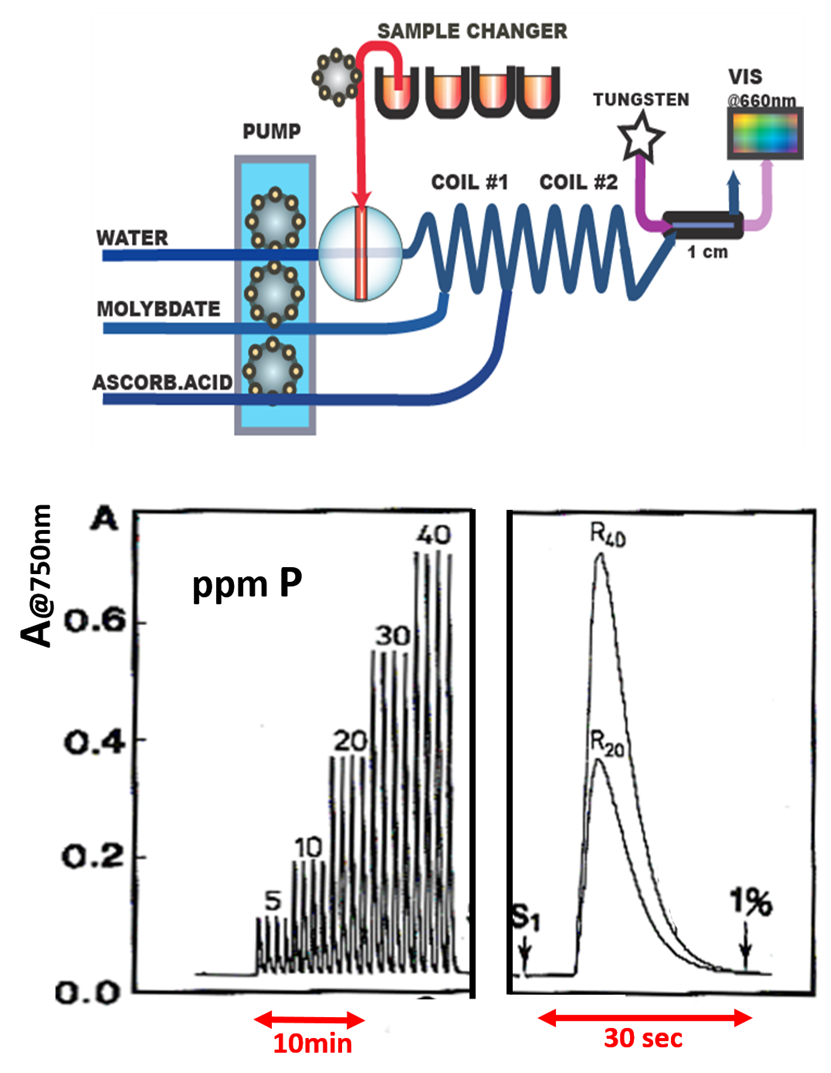cFI: Two Reagent Assay, o-Phosphate
Spectrophotometric assay of phosphate is based on a two-step reaction. First phospho molybdate is formed rapidly, followed by slower reduction of the yellow complex by ascorbic acid to form molybdenum flue, which is monitored either at 750nm or at 880nm.
This, constant flow method, is one of the most frequently performed Flow Injection assays. It was, for the first time performed in FI mode almost 50 years ago (Ruzicka 1975), and recorded as shown here, by injecting sample volume 40 microliters , at a flow rate of 0.8mL/min, in each channel. Reactor coils #1 and #2 were 50 cm long, made of 0.8mm I.D. tubing. At a flowrate of 2,4 mL/min the residence time of the reacting mixture in the second reactor was almost 10 seconds.
With 10mm long light path the detection limit was at about 1 ppM P with sampling frequency over 100s/hr.
The present day routine assays of orthophosphate are very similar to this old design, yet the method has been upgraded by using flow cells with longer optical path, by heating the reaction coil, and by increasing the residence time in the second reactor by making it longer. In this way the detection limit was extended down to 1ppB P level. Claims of LOD below 1 ppB P have been made ( for applications in oceanography) when using 1 m long flow cell at sampling rates of 6s/hr.
Chemistry of formation of phoshomolybdenum blue is bewilderingly complex, and therefore suggestions for optimum reagent composition vary widely. Therefore it is not surprising, that there are more than 350 citations on phosphate assay by cFI in Hansen's Database. Recently complex, well structured review was published, offering comprehensive information on the complex chemistry and structure of phosphomolybdenum compounds. (Nagul 2015).
1.2.18.
J. Ruzicka, W.B.Stewart, Anal. Chim. Acta 79, (1975) 79
J. Ruzicka, E.H. Hansen, Flow Injection Analysis 2nd Ed. Wiley NY. 1988
E.A.Nagul, I.D.McKelvie, P.Worsfold, S.D.Kolev, “The Molybdenym Blue Reaction for the determination of orthophosphate revisited: Opening the black box. Anal. Chim. Acta. 890 ( 2015) 60-82.










